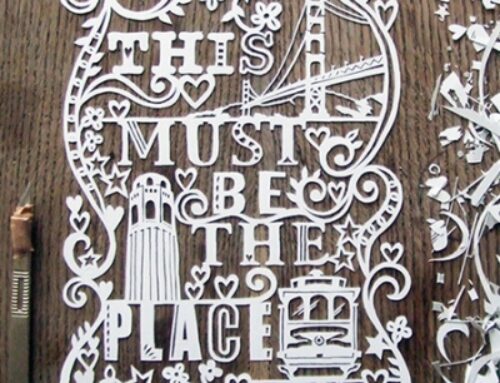Identity and exploration in landscape design – The third view to appreciate the landscape – The landscape to regain identity – The landscape sense of the inhabitant and the tourist – Who is landscape designed for? – The connotations of landscape as natural culture – The connotations of landscape design
Identity and exploration in the landscape
He was a sailor, but he was also a vagabond, whereas most sailors lead, if one can call it that, a sedentary life. Their nature is homely; and their home, the ship, they always carry with them, and so does their country, the sea. There is no ship that does not resemble another, and the sea is always the same. In the immutability of their surroundings, the foreign shores, the foreign faces, the changing immensity of life, everything slips and passes, veiled not by a sense of mystery, but by a somewhat disdainful ignorance. Because, for a sailor, there is nothing mysterious outside the sea, lord and master of his life, and as inscrutable as fate.
…..(speaks the sailor): ‘You must know that, when I was a little boy, I had a passion for maps. I used to spend hours looking at South America, or Africa or Australia, and get lost in all the glories of exploration. In those days there were a lot of blank spaces on the map of the earth, and when I saw one that looked particularly inviting (but they all look like that) I would lay my finger on it and say, ‘When I grow up, I’ll go there.’ …But there was one more, the biggest, the emptiest, if you will, that I was particularly attracted to. It was no longer an empty space. Since my childhood, it had been filled with rivers, with lakes, with names. It was no longer a white spot delightfully shrouded in mystery, a virgin terrain on which a boy could make his dreams of glory. It had become a place of darkness.’
In a single page of ‘Heart of Darkness’ Conrad centres, with two impressive syntheses, two of the most intriguing themes that run through our feeling through landscape:
The first theme is that of the sense of the ‘proper’ landscape and the sense of the ‘other’ landscape; the second theme is that of the landscape as a place of the possible or the landscape as a repository of reality, of the established. To these main themes are added other complementary themes: the particularity of the sea, in which the sense of mystery is a dwelling place, the evocative power of the abstract representation of the landscape through the map.
But above all, the two sentences interest us because they stimulate us in a precise direction: investigating the landscape as the motor of fundamental attitudes, primary to our life choices: identity, but also research, up to Chatwin’s restlessness.
I know I am wearing the designer’s hat here, and I want to reassure that such an investigation is not just to satisfy a desire for psycho-anthropological knowledge, but that we are engaging in this labyrinth precisely because we are uncertain about the ‘Fundamentals of Design’ for the landscape: in order to make sense of the ‘landscape project’, we still need to understand what specificity of the landscape attracts us, what resource the landscape represents and for whom and for what purposes, what tools can we activate to achieve a better relationship between desires and landscape?
A first problem is the appreciation of a fundamental difference: landscape as a resource for investing in the future or landscape as a testimony to the past.
Too much has already been said about this difference, but little has been said about the psychological attitude behind the alternative.
In a culture that believes it has everything to do the landscape is a resource; in a culture that believes it has the world already made and only has to inhabit it, the gaze automatically turns to the past.
In the first case the gaze is synchronic, history does not exist, its signs on the land are only traces at the disposal of the imagination or negligible; in the second case the future does not exist, one cannot imagine anything other than what is aroused by deciphering the signs that are already there.[1]
Unfortunately, the balance between the two attitudes, the only suitable strategy for western man’s living in these centuries, lacks operational tools that are widespread in the culture: instead, a zigzag, upwind (or drunken) proceeding between one attitude and the other has been consolidated in the culture, as if a disciplined proceeding along the median, eastern route were impossible.
Thus not only is the false alternative between preserving the landscape or enhancing innovation[2] still being debated, but even among the most refined connoisseurs of the landscape theme, there are now those who pose as strenuous defenders of local identity and its rights to development, and now on the contrary as valorisers of primary resources, a good of humanity, a treasure of all and not appropriated by anyone. [3]
Even the ‘Project’ of the landscape finds a completely different root in the instances of those who use it as a resource at the disposal of the evolution of local identity and those who (instead!) use it as a tool for the valorisation of a heritage, so much so that the two perspectives often dialectically arrange themselves: one contradicts the other and there is no other solution than to ‘mitigate the impacts’. Evidence of this structural difficulty can be seen in the unease of planning in the Plans of the vast area, lacking procedures to correctly compose in their objectives a synergy between heritage protection and local development and reduced to accompanying their generic Plan indications with proposals for interventions that are completely evanescent (almost always structural transformations) or vice versa hysterically provocative (almost always infrastructural transformations).
[1] Even the signs that are already there escape our ability to take them into account: from Guenon to Schama, the lament over these lost systems of signification reminds us of the crisis of our culture even before that of our territory. See for this L.Bonesio (1993), La terra invisibile, Milan, Marcos e Marcos, pg.54 et seq.
[2] It seems impossible but still on 12 January 2000 La Repubblica devoted two entire pages (twelve columns!) to the noble and heated debate between Gregotti, Cervellati, De Michelis, the mayor of Modena and the Superintendent of the Emilia Romagna region as to whether or not it is licit to intervene in historic centres (or in existing cities, or on the cultural landscape) with innovations (the subject was F. O. Gerhy’s project for a ‘gateway’ to Modena).
[3] It seems impossible, but this is the issue at the heart of the debate between local populations and environmentalists in protected areas, now dressed up in controversy over hunting, now by mayors claiming space for expansions of their centres, now by eco-integralists who want to prevent activities, even traditional ones.




